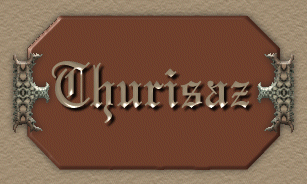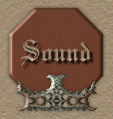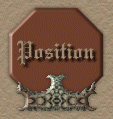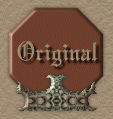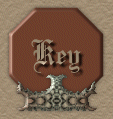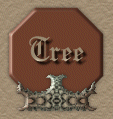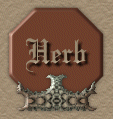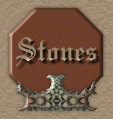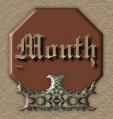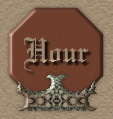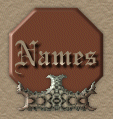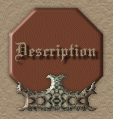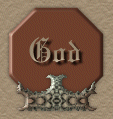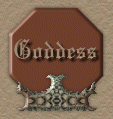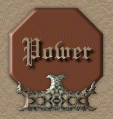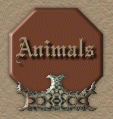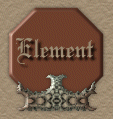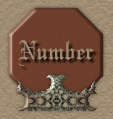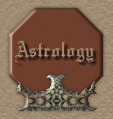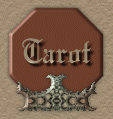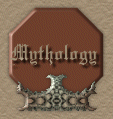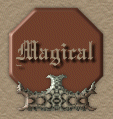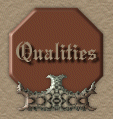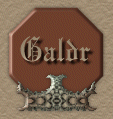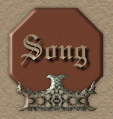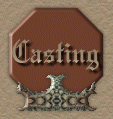

"TH"
(the unvoiced "th" as in thorn)

Thor's hammer or a
sharp thorn on brambles

1st aett, 3rd rune

Protection, the enemy of unfriendly
forces, a thorny vine, such as blackberry,
that provides a defense against invaders

Protection, destruction, defense,
polarity, action, regeneration

Oak

Houseleek

Bloodstone, garnet, red jasper,
obsidian, onyx, black tourmaline

Red

July 29 - August 13

2:30 p.m. - 3:30 p.m.

The Germanic name: Thyth (Thurisaz)
The Norse name: Thurs
The Anglo-Saxon name: Thorn
The Icelandic name: Thurs
The Norwegian name: Thurs

Named after a race of giants,
Thurisaz is a power of defense and
destruction symbolized by brambles,
thorny bushes that fence in livestock
and protect boundaries. Depending on
how it is used, Thurisaz can represent
an active defense or an attack against
adversaries.
The rune is used as a source of protection,
particularly from unwanted energies and
malicious people.
It appears in the variant shape of "Y"
in pub and inn signs in England, such as
Ye Olde Pub.

Thor was the strongest of all the
Norse gods: his footsteps were thunder itself
and he carried a hammer called Mjollnir
that could level a mountain with one blow.
To weild this hot weapon, he needed an
iron glove named Iarn Greiper, a magic
gauntlet that enabled him to catch Mjollnir
without harm when the hammer returned to
him. Another of his magical tools was
Megen-giord, a girdle or big belt that when
worn doubled his power. Thor rode through
Midgard in a wagon drawn by two goats named
Tanngniortr and Tanngrisnr. Because the heat
of his presence was so great, Thor could never
use the Bifrost Bridge, a bridge between Asgard
and Midgard. Instead, he had to wade across the
many rivers. Thor was married twice, first to the
giantress Iarnsaxa, who bore him two sons, Modi
(courage) and Magni (strength), and second to Sif,
a beautiful golden-haired goddess who bore him a
son, Lorride, and a daughter, Thrud. The Norse
Thunder God lived in Asgard in Thrudheim, the Land
of Strength. His spacious palace, called Belskirnir,
had 540 halls. Widely worshipped by the common people,
he was called upon to protect the fertility of the
land. Hammer-shaped amulets, Thor's symbol, were worn
well into the Christianization of Scandinavia. Thursday
gets its name from him.

Goat, ram, dragon, hound, cat,
tiger, lion, leopard, porcupine, mosquito,
Tasmanian devil, wasp, bear, elephant,
mongoose, rhinoceros

Fire

3

Mars

Justice

Thurisaz is a symbol of lightning
and thunder, equated with Mjollnir,
the hammer of Thor. This weapon was
the destroyer of the etins (giants)
and the protector of Midgard and
Asgard. Thor was related to the
giants-called "thursars"-in his
gigantic size and brute strength,
as well as in his lineage, because
his grandfather, Odin's father, was
a giant. The Aesir constantly strove
to maintain their protective enclosures
in the world, and the power of this
rune was invaluable in this effort.
The giants were not morally evil, but
were detrimental to the established
and instinctual life urge exemplified
by the Aesir, Vanir, and humankind.
The thorn protected Midgard, Vanaheim,
and Asgard, the middle and upper worlds.
Thursars were giants who went by several
names, including "rime-thurses," or frost
giants. They were the enormous, ancient,
and wise creatures who fought against the
gods. They represented primal forces,
elemental in nature. On one pole, the
Thurisaz-rune represented the powers of
the hoar-frost, who were the giants from
Nifelheim, the cold land; on the other
pole, the fire-giants from Muspelheim,
the fire land. In Norse Mythology, as in
Greek cosmology, the giants came first.
Ymir, the first giant, a huge troll, was
shaped by the cold but brought to life by
the heat. He was created at the same time
as the cosmic cow, Audhumla, was released
by her licking the rune, and was sustained
by her generously flowing milk, essentially
beginning the cycle of life.

Actively protects from enemies and harm
Overcomes unfriendly situations
Love Magic
Awakens your will and helps you take action
Awareness of the separation and commonality
of all things
Projected energy and applied power

Thurisaz, thurisaz, thurisaz
Th th th th th th th th th th
Thur thar thir ther thor
Thu tha thi the tho
Th th th th th th th th th th

Thurisaz embodies the life-death
polarity, and has the potential of melding
the two polarities of kinetic energy into
one pattern of action. This rune can warn
you to not rush headlong into things but
think them through first. Thurisaz is either
active energy directed outward or passive
Thurisaz energy contained and directed
inward. It acts mostly as a carrier, and
combines well with various other runes to
ensure success when you're doing works of
magic.
Also associated with the forces of
regeneration and fertilization, the TH-rune
breaks down barriers, setting the stage for
new beginnings. In faerytale, it is the thicket
that protects Sleeping Beauty's castle, and,
traditionally, the hedge surrounding sacred
enclosures. In magic, sleep spells were cast
using the thorn or the spindle, and, as in
"Sleeping Beauty," this rune also symbolizes
the thorn of awakening.
The first two runes of the first aett, Fehu
and Uruz, embody an unconscious or unmanifested
dynamic force. As Thurisaz enters the aett,
this runic force moves to the edge of consciousness.
Its energy is neither totally unconscious, as
with the first two runes, nor totally conscious,
as with the following rune, Ansuz, which governs
consciousness. In this sense, Thurisaz remains
on the edge, between the unmanifested and the
manifested. Slightly submerged, this rune resides
in the levels of the unconscious mind that are
easily accessible. A negative side of this rune
appears in the shadows of the unconscious mind.
It represents the repressed, shadow aspects of
your being, which when not dealt with can
fester and become potentially dangerous.
The Gateway represents tumult, conflict,
combustion, complexity, good luck on the horizon,
or misfortune about to fall. It suggests
restlessness and change, which can be good or bad.
Its final significance will depend largely on the
other runes. Because of its ambiguity, it changes
little when reversed.
Thurisaz is the first of the runes of "need",
"poverty". Such a "short supply" is not destructive
by definition, rather lying on our way to reinforce
us and to teach us something.
This rune communicates to us that the essence of
learning is suffering - what at first glance appears
to us to be negative, destructive and painful, proves
in reality to be a very important lesson, the learning
and acquisition of which can possibly change our life
for the better.
When used in divination it signifies: poverty, painful
outcome of a situation, discipline, insight/knowledge,
introspection, focus.

For use in magik: as an aid in the process of
learning, assistance in meditating and attaining
self-discipline, for clearing up the meaning
and essence of a grave situation.

A thorn's function is to protect the plant,
and thus it is Thurisaz also that appears
in sense of all forms of self-protection.
The rune says that better results are achieved
if allowed is an unobstacled flow of energy
that surrounds one, without any pressures.
In its upright position the rune denotes a
dilemma. If bringing some important decision
is in question, the rune advises that thorougly
and without any haste light be thrown upon all
details of the problem prior to making the decision.
To view and understand things clearly and
realistically in order to bring a correct decision
some certain time is needed, and we should let it
pass if possibility exists to do that. When drawn
in the reversed position this rune suggests
disappointment, delay, or loss. Fehu reversed also
suggests failures in love. In the financial spheres,
too, this is a bad sign, as expectations are not going
to be materialized.
If this rune stops in its reversed position it announces
bringing of an imprudent, hasty and abrupt decision,
to be regretted later and which could possibly produce
serious discords in the family.

Fehu
Uruz
Thurisaz
Ansuz
Raidho
Kenaz
Gebo
Wunjo
Hagalaz
Naudhiz
Isa
Jera
Eihwaz
Perdhro
Algiz
Sowilo
Tiwaz
Berkana
Ehwaz
Mannaz
Laguz
Ingwaz
Othala
Dagaz
Rune Interpretations
Home

